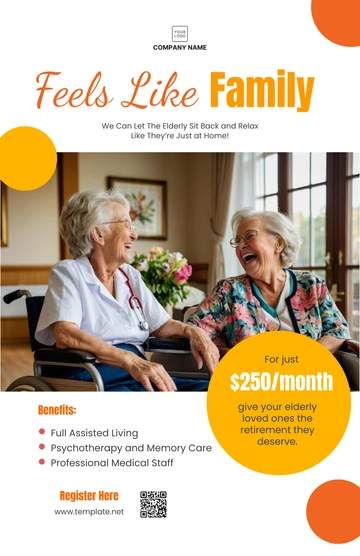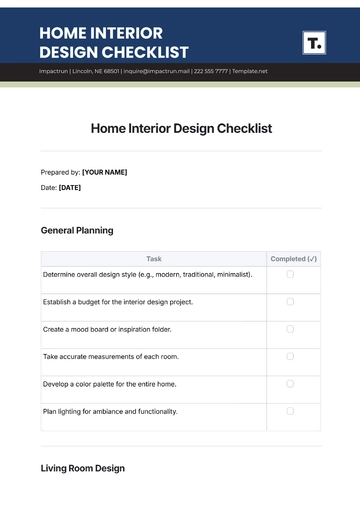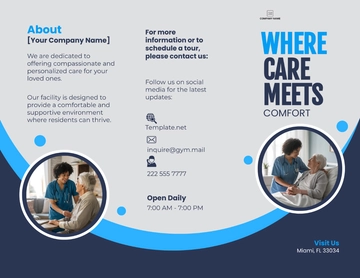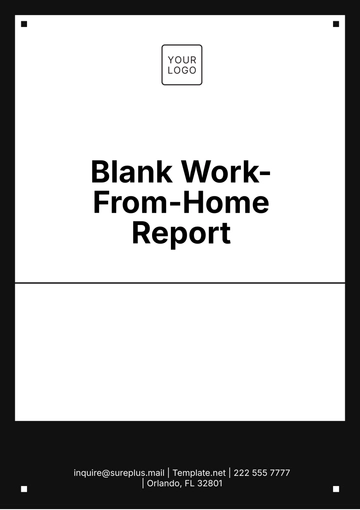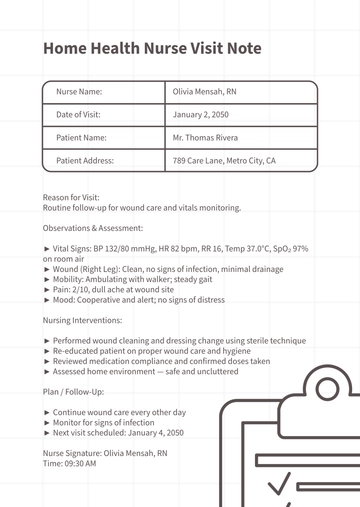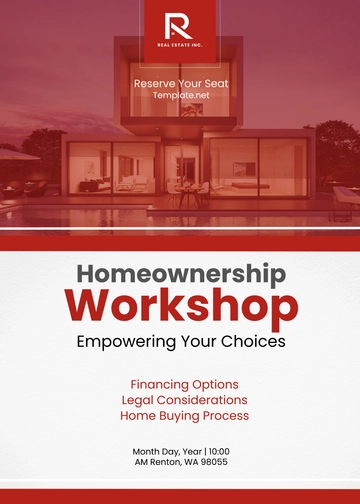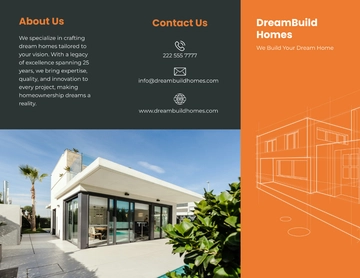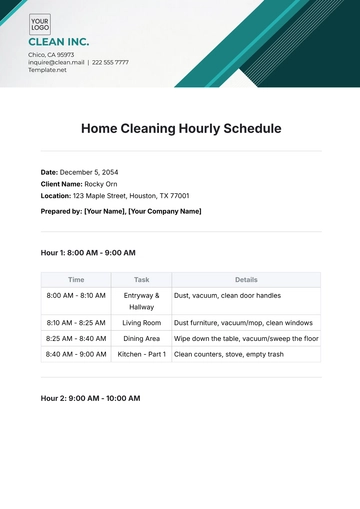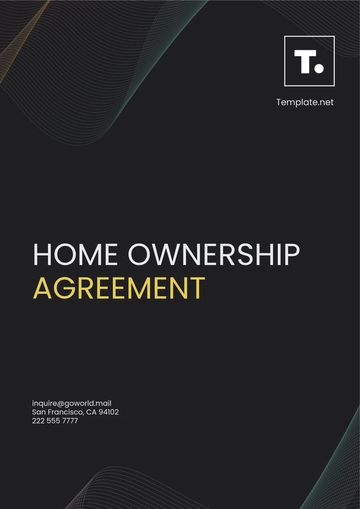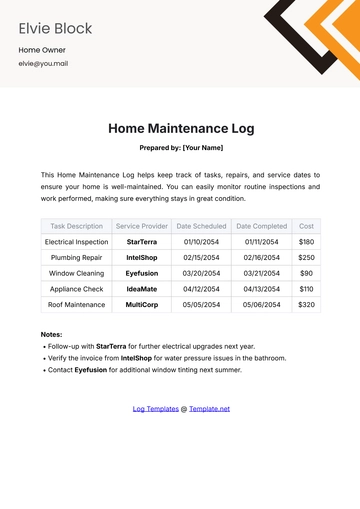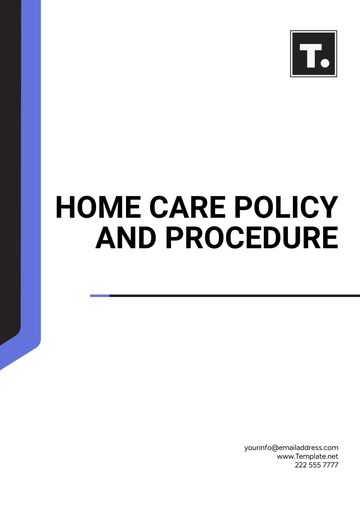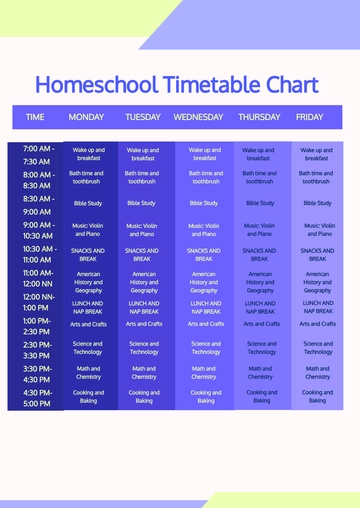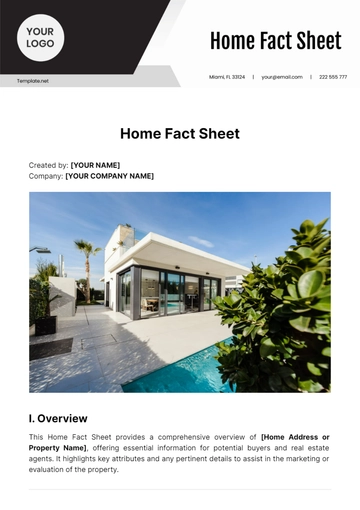Free Nursing Home Business Strategy
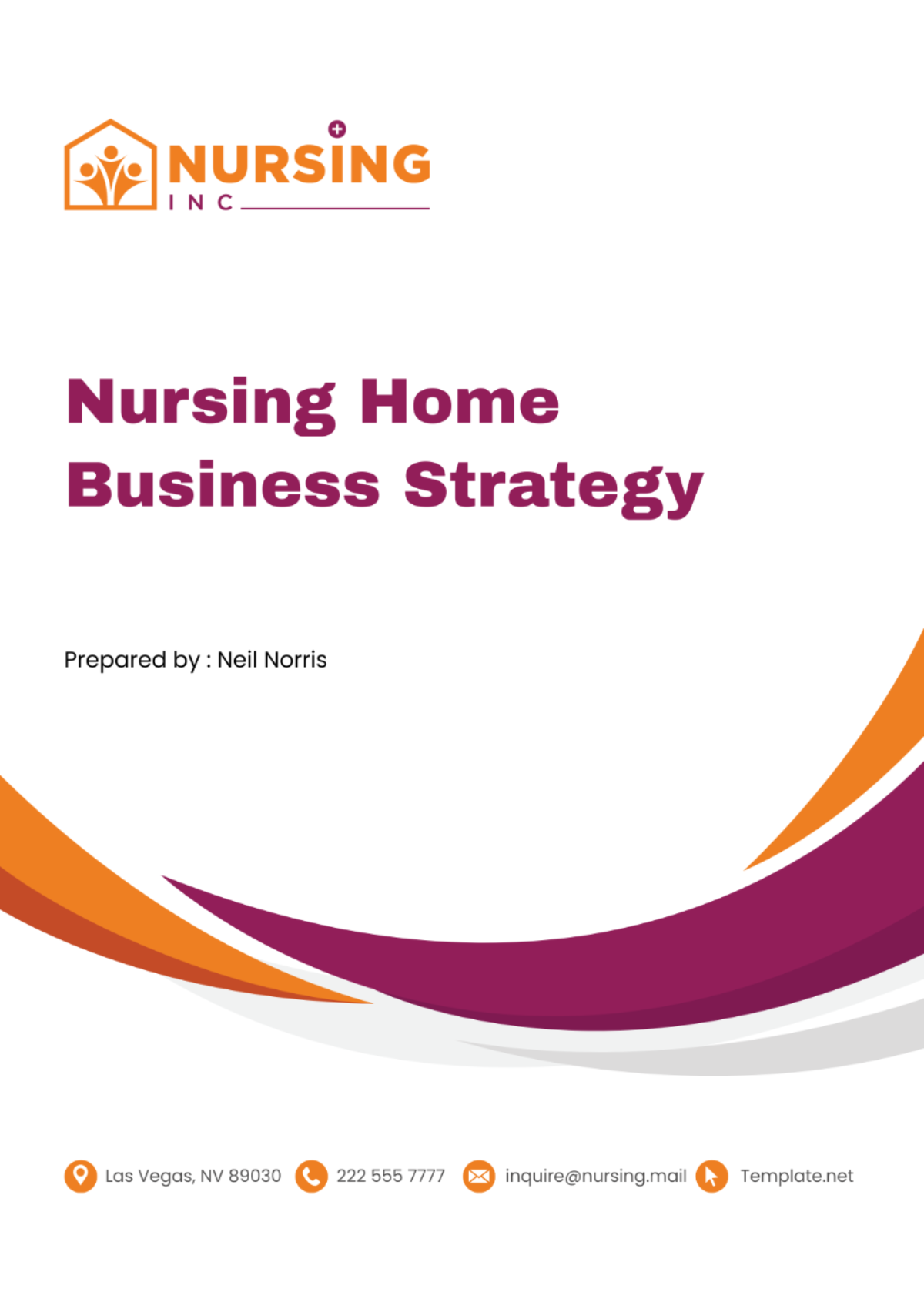
A. Executive Summary
[Your Company Name] aims to establish itself as a premier provider of long-term and comprehensive healthcare services tailored to meet the unique needs of the senior population. By combining clinical expertise with compassionate care, we strive to set a new standard in senior living that prioritizes dignity, comfort, and well-being. Our mission is to become a trusted partner in the journey towards aging gracefully, offering personalized support and innovative solutions to enhance the quality of life for our residents.
With a commitment to excellence and a deep understanding of the evolving healthcare landscape, [Your Company Name] is poised to make a significant impact in the region. Our strategic approach focuses on swift market penetration while ensuring sustainable growth through continuous improvement and adaptability. By fostering a culture of empathy, integrity, and professionalism, we aim to become the preferred choice for seniors and their families seeking high-quality care and peace of mind.
B. Market Analysis and Competitive Landscape
Our analysis delves into the demographic trends, competitive dynamics, and market trends shaping the landscape of long-term care for seniors. The table below highlights key factors such as demographics, competitive strengths and weaknesses, and emerging market trends, providing valuable insights for strategic planning and positioning within the industry. Understanding these dynamics is essential for [Your Company Name] to capitalize on opportunities and address challenges effectively.
Demographic | Competitive Strength | Competitive Weakness | Market Trend |
|---|---|---|---|
Seniors over 70 | High-quality services | Cost | Increased demand for specialized care |
Aging baby boomers | Innovative programs and therapies | Lack of differentiation | Growing preference for home-like environments |
Families in need of respite care | Flexible service offerings | Quality inconsistencies | Increased awareness and acceptance of respite care |
Seniors with cognitive impairments | Specialized memory care units | Staff training and turnover | Rising incidence of dementia and Alzheimer’s |
Seniors needing rehabilitation | Highly-skilled therapists | Insufficient individualized care | Increasing need for post-surgical rehabilitation |
C. Business Model and Services Offered
At [Your Nursing Home Name], we embrace a versatile business model designed to accommodate a diverse clientele while ensuring financial sustainability and operational flexibility. Our revenue streams encompass a combination of service fees from private-pay clients and reimbursements from government-assisted beneficiaries, allowing us to maintain a balanced financial outlook and provide equitable access to high-quality care.
Revenue Model
Underpinning our business model is a mixed-revenue approach that blends private-pay arrangements with government reimbursements. This strategy enables us to cater to a wide range of individuals, including those with varying financial capacities and healthcare needs. By diversifying our revenue sources, we mitigate financial risks and bolster our ability to invest in staff training, facility enhancements, and innovative programs.
Services Offered
Long-term Care: Our core offering revolves around long-term care services tailored to support residents with chronic illnesses, disabilities, or age-related limitations. From assistance with daily activities to personalized care plans, we prioritize comfort, dignity, and holistic well-being.
Rehabilitation Services: We provide comprehensive rehabilitation programs delivered by highly skilled therapists to help residents regain independence, mobility, and functionality following illness, injury, or surgery. Our multidisciplinary approach encompasses physical, occupational, and speech therapies to optimize recovery outcomes.
Memory Care Programs: Recognizing the unique needs of individuals with cognitive impairments, we offer specialized memory care programs designed to promote cognitive function, safety, and emotional well-being. Our memory care units feature tailored environments and structured activities to support residents living with Alzheimer's disease and related dementias.
Palliative Care: We prioritize comfort, dignity, and quality of life for residents facing advanced illness or end-of-life care needs. Our interdisciplinary team provides compassionate palliative care services focused on pain management, symptom control, and emotional support for both residents and their families.
Life-Enhancing Activities: In addition to essential healthcare services, we offer a diverse array of life-enhancing activities and social engagement opportunities to promote mental stimulation, socialization, and overall well-being. From recreational outings to arts and crafts sessions, we strive to create a vibrant and enriching community for our residents to thrive.
By delivering a comprehensive suite of services encompassing long-term care, rehabilitation, memory care, palliative care, and life-enhancing activities, [Your Nursing Home Name] remains committed to enhancing the quality of life for our residents and fostering a supportive and nurturing environment for all.
D. Operational Plan and Facility Management
Our operational plan and facility management strategy are integral to delivering exceptional care and ensuring a safe, nurturing environment for our residents. Through meticulous recruitment, thoughtful facility design, utilization of advanced equipment, and stringent quality assurance measures, [Your Company Name] is committed to upholding the highest standards of service delivery and resident satisfaction.
We will recruit well-qualified and compassionate staff members with assisted living experience
The facility will be designed with considerations for safety, accessibility, and home-like environment
We will use state-of-the-art equipment to ensure the best level of care
All services will be subject to routine quality assurance checks
Records will be maintained electronically for ease in reporting and filing for reimbursements
E. Marketing and Sales Strategy
At [Your Nursing Home Name], our marketing and sales strategy is designed to build brand awareness, foster community engagement, and drive referrals while maintaining a strong presence both online and offline. Through a multifaceted approach that combines traditional marketing tactics with innovative outreach initiatives, we aim to position ourselves as the premier choice for senior care in our local community.
Targeted Marketing Channels
Our marketing efforts will prioritize direct mailers, local print advertising in newspapers and magazines, and strategic social media engagement across platforms such as Facebook, Instagram, and LinkedIn. By utilizing these targeted channels, we aim to reach potential residents and their families where they are most likely to engage with our messaging.
Community Outreach Programs
We are committed to actively participating in community outreach programs and events to connect with local residents, healthcare professionals, and community organizations. These initiatives include health fairs, senior expos, educational seminars, and workshops focused on topics relevant to aging adults and their families.
Referral Systems
To strengthen our referral network, we will establish collaborative relationships with local hospitals, rehabilitation centers, physician practices, and Medicare agencies. By providing exceptional care and maintaining open lines of communication with healthcare partners, we aim to generate a steady stream of referrals from trusted sources.
Online Presence and Reputation Management
Our online presence will be reinforced through a user-friendly website that highlights our services, amenities, and testimonials from satisfied residents and families. Additionally, we will actively manage our online reputation by responding promptly to reviews and engaging with followers on social media to foster positive relationships and build trust within our digital community.
Sales Process and Relationship Building
Our sales process will prioritize relationship building and personalized communication with prospective residents and their families. We will offer informative facility tours, conduct comprehensive assessments to understand individual needs, and provide ongoing support and guidance throughout the decision-making process.
Through these strategic initiatives, [Your Nursing Home Name] is poised to effectively reach, engage, and convert prospective residents and their families, establishing ourselves as the preferred provider of senior care services in our local market.
F. Financial Projections and Budgeting
Our financial projections and budgeting plan outline a strategic trajectory for [Your Nursing Home Name], forecasting revenue growth, expense management, and profit margins over a five-year period. The table below presents a comprehensive overview of projected revenues, expenses, and profits, providing insights into the anticipated financial performance of our nursing home. These projections serve as a guide for financial planning and resource allocation, ensuring the long-term sustainability and success of our operations.
Category | Year 1 | Year 2 | Year 3 | Year 4 | Year 5 |
|---|---|---|---|---|---|
Revenues | $1M | $1.5M | $2.2M | $2.7M | $3.5M |
Expenses | $800K | $1M | $1.2M | $1.5M | $1.8M |
Profit | $200K | $500K | $1M | $1.2M | $1.7M |
These financial projections demonstrate [Your Company Name]'s commitment to achieving sustainable growth and profitability while delivering exceptional care and services to our residents.
G. Risk Management and Compliance
At [Your Nursing Home Name], we prioritize the safety, well-being, and regulatory compliance of our residents and staff through robust risk management practices and adherence to stringent regulatory standards. Our comprehensive approach to risk management encompasses proactive identification, assessment, mitigation, and monitoring of potential risks, while our unwavering commitment to compliance ensures adherence to all relevant federal, state, and local regulations governing nursing home operations.
Risk Identification and Assessment
We conduct regular risk assessments to identify potential hazards, vulnerabilities, and compliance gaps within our facility and operational processes. By analyzing factors such as safety protocols, emergency preparedness, infection control measures, and staff training needs, we proactively identify areas for improvement and implement targeted interventions to mitigate risks.
Mitigation Strategies
Upon identifying risks, we develop and implement tailored mitigation strategies to reduce the likelihood of adverse events and minimize their impact on residents, staff, and organizational operations. These strategies may include implementing safety protocols, investing in staff training and education, enhancing security measures, and leveraging technology to streamline processes and enhance efficiency.
Regulatory Compliance
We maintain rigorous compliance with all applicable federal, state, and local regulations governing nursing home operations, including but not limited to licensure requirements, staffing ratios, quality assurance standards, resident rights protections, and healthcare reimbursement guidelines. Our dedicated compliance team stays abreast of regulatory updates and ensures that policies, procedures, and practices are consistently aligned with current legal and regulatory requirements.
Continuous Monitoring and Improvement
We employ a culture of continuous monitoring and improvement to ensure ongoing compliance and effectiveness of our risk management strategies. Through regular audits, inspections, incident reporting, and performance evaluations, we identify opportunities for refinement and enhancement, allowing us to adapt to evolving regulatory requirements and emerging best practices in the field of long-term care.
H. Recruitment and Training
At [Your Nursing Home Name], we recognize the critical role that well-trained and compassionate caregivers play in delivering exceptional care and enhancing the quality of life for our residents. Our recruitment and training initiatives are designed to attract and retain talented individuals who share our commitment to excellence and align with our organizational values. Through a comprehensive approach that prioritizes recruitment strategies, onboarding processes, and ongoing training programs, we ensure that our staff is equipped with the necessary skills, knowledge, and empathy to provide person-centered care to our residents.
Recruitment Strategy
Our recruitment strategy focuses on identifying and attracting experienced caregivers who possess a strong passion for serving seniors and a deep commitment to our mission. We utilize a variety of channels, including online job boards, professional networks, community partnerships, and employee referrals, to reach potential candidates. Additionally, we conduct thorough interviews and background checks to assess candidates' qualifications, experience, and cultural fit with our organization.
Onboarding Process
Upon hiring, new employees undergo a comprehensive onboarding process designed to familiarize them with our organizational culture, policies, procedures, and resident care protocols. This includes orientation sessions, facility tours, introductions to key staff members, and hands-on training in essential caregiving techniques. We also provide access to resources and support systems to facilitate a smooth transition into their roles.
Ongoing Training Programs
We recognize the importance of continuous learning and professional development in maintaining high standards of care and adapting to evolving industry trends and best practices. As such, we offer ongoing training programs tailored to the specific needs of our staff, including clinical skills development, dementia care training, communication techniques, and regulatory compliance updates. These programs are delivered through a combination of in-person workshops, online modules, peer mentoring, and participation in external training opportunities.
Performance Evaluation and Feedback
To ensure accountability and maintain quality standards, we conduct regular performance evaluations and provide constructive feedback to our staff. These evaluations assess competency, professionalism, communication skills, and adherence to care protocols, allowing us to identify strengths, address areas for improvement, and recognize outstanding performance. Additionally, we encourage open communication and collaboration among team members to foster a supportive and cohesive work environment.
I. Service Quality and Client Satisfaction
At [Your Nursing Home Name], we are committed to upholding high service quality standards and ensuring client satisfaction through proactive engagement and continuous improvement initiatives. We prioritize open communication and transparency by conducting regular feedback sessions with our clients and their families, soliciting input on their experiences, preferences, and areas for improvement. Through these feedback sessions, we gain valuable insights into the needs and expectations of our residents and their families, allowing us to identify opportunities for enhancement and tailor our services to better meet their evolving needs.
To drive continuous improvement, we take swift action to implement any necessary enhancements or adjustments based on the feedback received. Whether it's refining care protocols, enhancing amenities, or improving communication processes, we are committed to addressing feedback in a timely and responsive manner to ensure that our services consistently exceed expectations. By fostering a culture of listening, accountability, and continuous improvement, we strive to not only meet but exceed the expectations of our clients and their families, ultimately enhancing their satisfaction and overall quality of life.
J. Strategic Partnerships and Collaborations
[Your Company Name] recognizes the importance of strategic partnerships and collaborations in driving innovation, improving service delivery, and expanding our reach within the healthcare community. By forging alliances with healthcare providers, community organizations, and other relevant stakeholders, we can leverage collective expertise, resources, and networks to enhance our service offerings and address the evolving needs of our residents effectively. These collaborations not only enable us to provide comprehensive and holistic care but also strengthen our position as a leader in the senior care industry.
In conclusion, [Your Company Name] is dedicated to fostering strategic partnerships and collaborations that drive positive outcomes for our residents, staff, and stakeholders. Through these alliances, we aim to uphold our commitment to excellence, innovation, and compassionate care, ensuring that we continue to meet the evolving needs of our aging population with integrity and professionalism.
- 100% Customizable, free editor
- Access 1 Million+ Templates, photo’s & graphics
- Download or share as a template
- Click and replace photos, graphics, text, backgrounds
- Resize, crop, AI write & more
- Access advanced editor
Drive growth and improvement with the Nursing Home Business Strategy Template from Template.net. This editable and customizable template outlines strategic objectives, market analysis, and action plans, specifically designed for nursing homes. Editable in our Ai Editor Tool, it's crucial for navigating competitive landscapes, enhancing service offerings, and securing a sustainable future for your facility.
